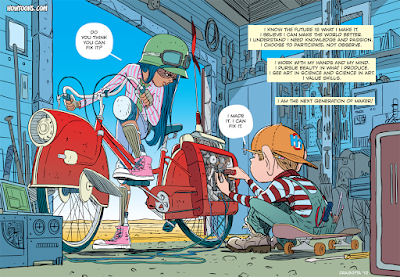Hello Bill,
I heard mention of your book, Soldersmoke - Global Adventure in Radio Electronics, on the G-QRP reflector and bought it on a whim. Since it arrived I have not been able to put it down. What a great read! Very enjoyable and an inspiration. I say that because my homebrewing had taken a bit of a back seat while other hobbies - flying RC gliders, ballroom dancing etc - came to the fore. But after reading just a few chapters of your book, the old soldersmith in me was stirred and I had to go and make something.
Like most Hams I am the 'caretaker' of a huge stock of components - well let's face it we are really just looking after part of the world's supply of components for the other guy who might need them! - I decided on a simple phase shift oscillator for 600 Hz and soon found a circuit from my old collection of circuit drawings. I had all the parts and quickly soldered it together. Sadly my elderly 'scope confirmed that it was not working and after a bit of head scratching I decided to make it up on a construction board. In the process I realised that my design had included components of the wrong values and if it had oscillated at all, it would have been in the MHz region! The final product worked a treat and I cobbled together some photos (in the attached PDF) to send to my radio pal - Roger DL3RMU - in Berg Bacchaussen in Bavaria. From your podcasts, I suspect you are a bit of a language wizard as well, but just in case - "Jede Schaltung braucht eine Lichtdiode !!" means, 'Every circuit needs an LED!' and "Erfog!" means 'success!' The result was a lovely 600Hz sine wave at nearly 5V p-p. Not exactly wizardry but very satisfying. Now wouldn't it be great if I could get it to oscillate at RF frequencies!?
Roger DL3RMU and I have shared an hour long, weekly, CW QSO since early 2005. Just to make it that bit more interesting we do it in German! Helpfully CW overcomes my pronunciation problems. This all started with my realisation that my urban location and limited antenna space restricted my effective operating range for a number of reasons. I am not a great linguist but I have always been interested in languages and I figured that while I might not have much reach, I could have a lot of fun trying out CW QSOs both QRO and later QRP in the language of the other guy rather than 'rubber stamp English'. To my surprise my rusty schoolboy French and slightly better German were well received. I met Roger a few times on the air and we decided to keep a weekly sched. I decided to give European languages a real go, so I cobbled together a handful of common phrases from dictionaries and online language resources to get by, before embarking on a more ambitious project: a set of translations for every European language.
Originally I wrote to the radio societies of every European country to seek help but this was not an effective approach. So I then contacted every non-English member of WACRAL (to which I belong) and asked them if they would kindly translate roughly 50 common QSO related phrases into their mother tongue. To my delight and surprise the response was great and a number of guys helped put together the translation files. There are now 15 European languages on my fledgling website. I call the website, 'Parlez Vous QSO' and it can be found at: http://web.onetel.com/~stephenseabrook/. I really ought to find out how to get a proper domain name sorted out (any advice welcome!) but it is easiest to find by typing 'Parlez Vous QSO' into your search engine. The site itself somehow caught the attention of a number of enquirers, some of whom simply emailed me the translations in their own language! This is the sort of 'fraternity of amateur radio enthusiasts' that makes our hobby great! There are quite a few 'missing' languages but the pleasure of being able to communicate - even falteringly - in the other guy's language is great and I am delighted with the response I have had from the guys on the other end of the QSO.
My construction was mainly limited to station accessories: PSK interface, RTTY interface, CAT interface and various test equipment before I got into QRP. I built a FoxIII, MFJ Cub for 20m and a couple of Christmas' ago a K1. What a great radio! I never cease to be amazed that if the station Icom 706 or the Kenwood 570D fails to yield a QSO with lots of Watts, a changeover to the K1 often finds a QSO within minutes! How can that be!?
Keep up the good work on Soldersmoke. I thoroughly enjoy the podcasts and look forward to the sequel to the book!
kind regards
Steve Seabrook M0ECS
Sittingbourne
England








